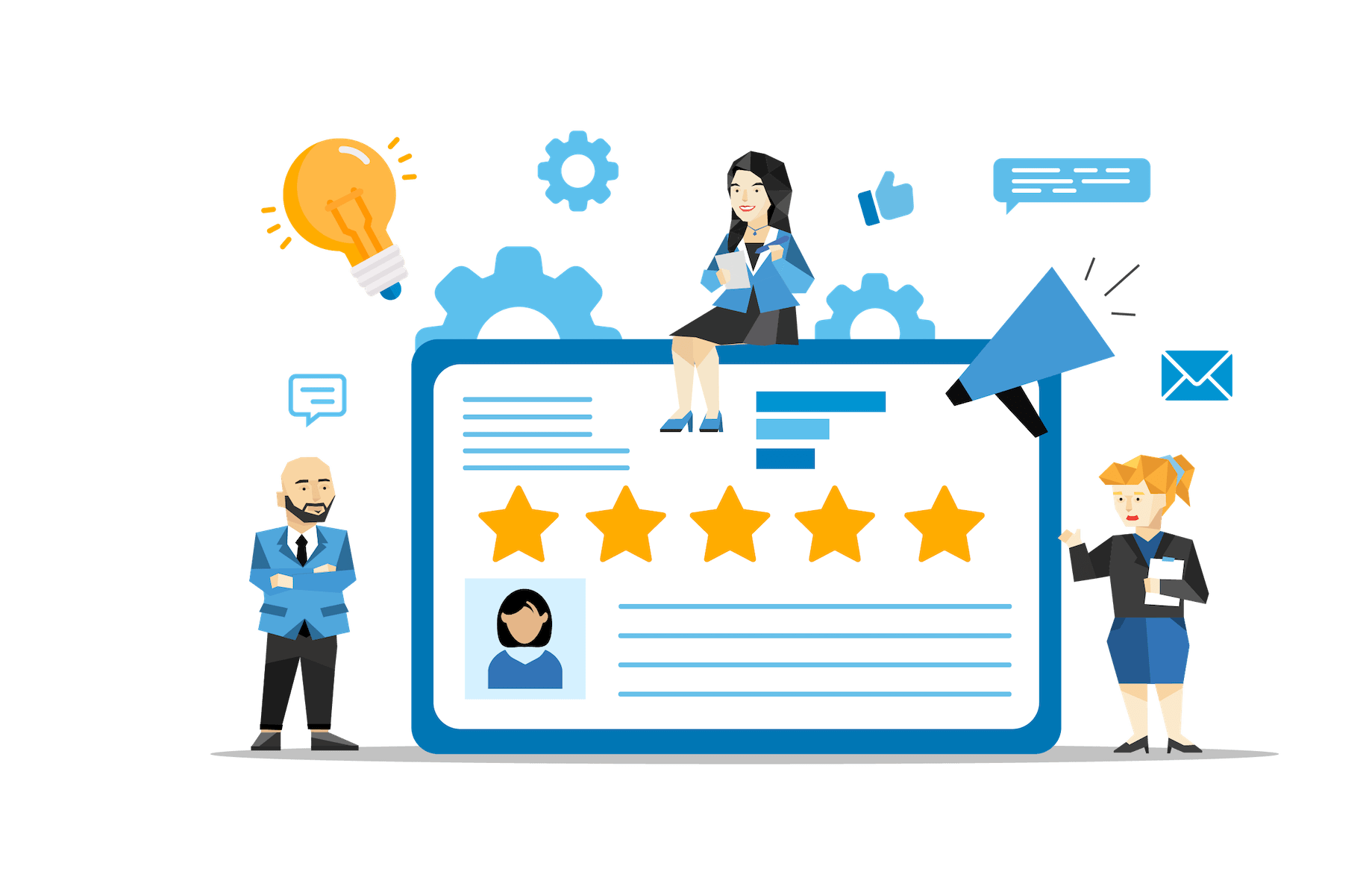Improving Customer Satisfaction
Customer satisfaction is a goal that every business should strive to achieve. When a customer is satisfied, it means that their customer experience was positive. If the customer wasn’t satisfied with their interaction with your business due to poor customer service, a lack of convenience, or a poor product or service, then it diminishes their overall experience. This is bad for you, not just because poor customer satisfaction will negatively affect your company’s reputation, but because it will make it difficult to retain that customer.
Ensuring a positive customer experience is essential to your ability to keep customers. It only makes sense that improving customer satisfaction will help to improve customer retention.
Customer Retention Drives Success
The success of your business relies heavily on customer retention. Your existing customers drive the majority of your revenue. Here are a few examples of how customer retention will help to drive the success of your business:
Reduce Customer Churn
Customer churn refers to existing customers who stop purchasing or using your products or services after a specific period of time. This is a bigger challenge than many organizations realize. Just because a customer has done business with you does not mean that they will continue doing business with you.
Poor customer satisfaction will increase the risk that your customers will decide to try another product or service from a different company. As the following statistics show, this is a real risk:
- According to American Express, 33 percent of Americans will consider switching companies if they experience a single instance of poor service.
- Companies in the U.S. lose an estimated $136.8 billion every year as a result of customers switching to another company.
Improving customer satisfaction will help to reduce the customer churn rate because it helps increase customer loyalty.
Increase Sales Opportunities
An existing customer is more likely to make a purchase than a new prospect is. By retaining existing customers, you’re naturally increasing your sales opportunities. It’s estimated that by increasing your customer retention by as little as 5 percent, you’re likely to increase your revenue by anywhere from 25 to 95 percent. The following are the main reasons for this:
Improve Conversion Rates
Existing customers who were satisfied with their initial experience (meaning, customers who haven’t churned), are much more likely to convert again. This is because they already trust your organization. Not only will they be more likely to make future purchases, but they will also be more open to any cross-selling and upselling opportunities that you present to them. You’ll greatly improve your conversion rates by simply improving customer retention.
Increase Customer Referrals
Customers who are loyal to your company are much more likely to refer your business to other prospects. These prospects tend to be much more qualified than the ones you attract using traditional marketing efforts as a result of the referral. The customers you retain can present you with future sales opportunities outside their own purchases.
Improve ROI
Your customer acquisition cost (CAC) and lifetime value (LTV) will both be improved by increasing customer retention. Your CAC is determined by dividing the amount you spent on marketing within a certain period by the number of customers you obtained in that same period. This cost can go down as a result of customer referrals. And the longer you keep your customers, the greater their LTV will be.
Reduce Marketing Costs
An added bonus of customer referrals is that marketing to existing customers costs much less than marketing to new prospects. In fact, it’s estimated that acquiring a new customer can cost anywhere from 5 to 25 times as much as it costs to retain an existing customer.
Customer Satisfaction Requires A Long-Term Strategy
With the knowledge of how important customer retention is and how big an impact customer satisfaction has on retention, you’ll want to improve overall customer satisfaction as much as possible.
Unfortunately, one of the common mistakes that businesses make is to assume that if the customer is satisfied with a product or service, then customer satisfaction has been achieved. This is not how it works. The customer’s experience with your company doesn’t end with the purchase — it continues throughout the course of their relationship with you. This means that customer satisfaction is a long-term effort that requires a long-term strategy, including these essential elements:
Know Your Customers
Know who your customers are so that you can put forth an honest effort in building relationships with them. If you don’t know who they are and what their needs are, then engaging with them will be challenging. How do you know what kind of content to send them? Or what kind of products or services should you offer them? Poor understanding of your customers can lead to attempted engagement efforts that aren’t relevant to them, which will strain your relationship and hurt your ability to build loyalty.
For example, maybe they purchased a software subscription at a basic tier. If you’re not familiar with their needs, you might try to push a higher tier (at a higher price). If they simply don’t have the budget for this and they let you know this prior to their initial purchase, it’s not going to reflect well on you.
Implement An Onboarding Program
You want your customers to get the most out of the product or service that they have purchased from you. If they are unable to, they will not be satisfied with their purchase. It’s why you should implement an onboarding program — especially if you provide an in-depth service of some kind. For example, if you have sold a SaaS subscription to a client, you will want to make sure that their team learns how to use their new software effectively. An onboarding program may include training, support, and access to educational resources.
Enhance Customer Experience Through Relevant Sales Opportunities
While you don’t want to be over-promotional, identifying relevant cross-selling and upselling opportunities can certainly benefit both you and your customers. For example, if they have been subscribing to one of your software programs for a few years and you know that their business has expanded, you might consider recommending that they upgrade to a higher tier in order to obtain access to more features. Explaining how these additional features could benefit their business could convince them to take the leap. As a result, you are enhancing their customer experience.
Ensure A Seamless Customer Experience
Creating a seamless experience is vital to the satisfaction of your customers. It means that whether they want to find a solution to a problem, learn about a specific topic, make a purchase, or speak to you about something, they can do so with ease.
Ensure A Convenient Customer Experience
Customers may want to engage with you in a variety of different ways on a variety of different channels. Whether they want to contact you, find new content, or make a purchase, they should be able to do so no matter what channel they’re using, be it through your website, email, phone, text, or social media.
Make It Easy For Customers To Contact You
Customers shouldn’t have to “figure out” how to contact you. By the time they have become customers, they should already have an email address and phone number that they can use to get into contact with whatever sales rep handled their account. Even if they don’t, you should make it easy for them to find ways to contact you through your website and social channels. And if they can’t reach you right away, make sure someone gets back to them as quickly as possible. There’s no better way to lose a customer than by ignoring their attempts to contact you, after all.
Keep Your Customers Engaged
Finding new sales opportunities is one way to keep your existing customers engaged; however, it isn’t and shouldn’t be the only way. If the only engagement you have with customers is in the form of sales pitches, their satisfaction is going to slowly erode over time. Engage with customers between sales efforts as well, like continuing to provide new content that is relevant to their specific needs.
Personalize The Customer Experience
If you make your engagement feel more personal, your customers will feel more valued. It will feel like an actual relationship and not a lazy effort to retain customers and increase sales. Use your understanding of who the customer is to personalize their experience. For example, sending content that can further educate them about the product or service that they purchased. Even personal notes wishing them a happy birthday or a happy holiday help add a personal touch that shows you actually care about maintaining a long-term relationship and not just generating as much revenue over the short term as possible.
Listen To Your Customers
Relationships are not one-way streets. If your relationship with your customers is one-way, they won’t get much out of it. You’ll improve customer satisfaction significantly if you allow your customers to have a voice and if you actually listen to what their needs are.
Request Customer Feedback
Asking customers for feedback shows that you care about the experience that they had and that you value their input. If you actually take action based on that input, you’re bound to improve their customer satisfaction.
Address Customer Questions And Concerns
Always address any questions or concerns that your customers raise as quickly as possible. Ignoring them can result in the loss of sales as well as the loss of loyalty.
Don’t Ignore Customer Criticism
Don’t assume that a customer is lost if they criticize you. Engage with them to find out how you can improve their experience. They may not be satisfied, but you could fix that if you’re willing to address the issue head-on. By engaging with a customer who is critical or who had a negative experience you can learn how to avoid similar situations in the future.
Use Analytics To Track Customer Satisfaction
Analytics tools can help you track customer satisfaction in a variety of ways. For example, there are tools that can help monitor when customers are becoming inactive (or at risk of churning) as well as that can track how they are engaging with you (like not opening any of your emails). Such analytics can give you an idea of how satisfied customers are as well as identify potentially unsatisfied customers so that you can try to improve their experience.
Identifying Customer Satisfaction Issues
Poor customer retention may be the result of poor customer satisfaction. If your business has a particularly high churn rate (if it’s higher than 5 percent on a monthly basis it’s a serious issue), then it’s imperative that you are able to identify where your business may be failing in the customer satisfaction department. There are a few signs indicating that your customers are not satisfied with their experience:
Your Customer Service Is Lackluster
Poor customer service will result in poor customer experience for many. There are several ways to determine if your customer service is lackluster:
- Monitor Brand Reputation – There are social tools available that allow you to monitor conversations about your business on social media as well as check negative reviews, which may mention issues with your customer service.
- Request Feedback – Send surveys to your customers asking them to rate your customer service. You can also request that customers take part in brief surveys following an interaction with your customer service.
Your Engagement Is Poor
Regular engagement helps to keep your company at the top of your customers’ minds. Review your own engagement efforts: how often do you interact with existing customers? Do you ever engage with customers between sales efforts? Monitor the behavior of customers on social media, on your website, and through email. Are they engaging on any of these channels? Do they open your emails? If you determine that engagement is indeed poor, then you need to begin working on ways that you can address this issue.
You Don’t Know If Customers Are Happy Or Unhappy
The inability to determine whether your customers are happy or not will make it difficult to improve customer satisfaction. You need to be able to identify both happy and unhappy customers.
Identify Your Happy Customers
Figuring out which customers are happy with their experience both prior to and following their purchase will help you figure out what you’re doing right. Identifying what it is that has kept them happy will also make it easier to keep them happy.
Identify Unhappy Customers
Unhappy customers are more likely to churn. Discovering who they are will give you a chance to prevent them from churning. Even if you do lose them, identifying why they are unhappy can help you prevent making the same mistake with other customers in the future.
You’re Not Identifying Relevant Sales Opportunities
If you’re not identifying new sales opportunities for existing customers, whether they are upselling or cross-selling opportunities, then you’re limiting the amount of revenue that you could be making from your existing customers. But more importantly, you’re not enhancing their customer experience in any way. If you are presenting such opportunities but your conversion rates are low, it means that the opportunities you’re presenting are not relevant to your customers and that you likely do not understand who your customers are and what their needs are.
Customer Satisfaction Is The Key To Customer Retention And Brand Evangelists
Focusing on customer satisfaction will help you retain existing customers. By improving your customer retention, you can not only increase sales over the long-term, but you can also convert your customers into brand evangelists who can lead you to more highly qualified prospects. We can help you implement an effective customer satisfaction strategy as well as identify and address issues that may be affecting your customer retention.















